2020 Range Rover Sport Review & Buying Guide | Hop onto rung No. 2
https://ift.tt/34AEffA
There are four Land Rover models that wear the name Range Rover, all of which provide high style, rich interior, compelling performance and greater off-road capability than is typical for a luxury SUV. They differ in size, price and just how compelling that performance gets. The 2020 Range Rover Sport sits on the second rung of the ladder just below the full-stop Range Rover and above the Velar and Evoque. As the name suggests, it’s the sportier (and cheaper) alternative to that biggest Range Rover, with a sharper, less stately driving experience.
We wouldn’t necessarily call it sporty in comparison to true sport utility vehicles like the Porsche Cayenne and Audi Q8. It’s still big, heavy and luxury-focused with plenty of off-road componentry on board. And really, that’s just fine. All of its engines provide ample performance, from the mild-hybrid inline-six base engine all the way up to the truly nutty Range Rover Sport SVR that jubilantly warbles, crackles and roars like a Jaguar F-Type. There’s also something uniquely refreshing about the way most of the Range Rover Sport trims waft down the road, soaking up road imperfections, providing a commanding view of the world around and making you feel like king of the road (or perhaps more fittingly, Queen of England). It’s a special SUV, and although there are practical and functional foibles, it tends to make you feel pretty special, too.
What’s new for 2020?
For 2020, yet another new powertrain enters the fray after last year’s addition of the new mild-hybrid inline-six. Dubbed the P400e, the new Range Rover Sport plug-in hybrid combines a four-cylinder engine with an electric motor to produce 398 hp. It will go an estimated 22 miles on electricity alone and will continue to deliver superior fuel economy thereafter. Other changes include now-standard Apple CarPlay and Android Auto.

What’s the interior and in-car technology like?
Like every Range Rover, the cabin’s design is minimal, elegant and constructed with superior materials. What isn’t covered in actual leather is covered in a close approximation. Plastics are either rich gloss black or convincingly metallic. There are also screens everywhere – for the gauges, infotainment and one that handles the HVAC system and just about everything else in need of control. If you’re looking for one word, the description would be “cool.”
However, all those screens can be distracting – the lower one in particular, although it’s the reason Land Rover has been able to do away with its previous sea of buttons. The screens are also never in much of a hurry to do what you ask – particularly the upper infotainment one. Despite updates in recent years, Land Rover’s touchscreen is slow to respond and its menu structure is convoluted. Too often you’ll find yourself going between menus, especially for the audio system. The inclusion of Apple CarPlay and Android Auto should be a bonus for 2020, but instead is almost a workaround. Not ideal.
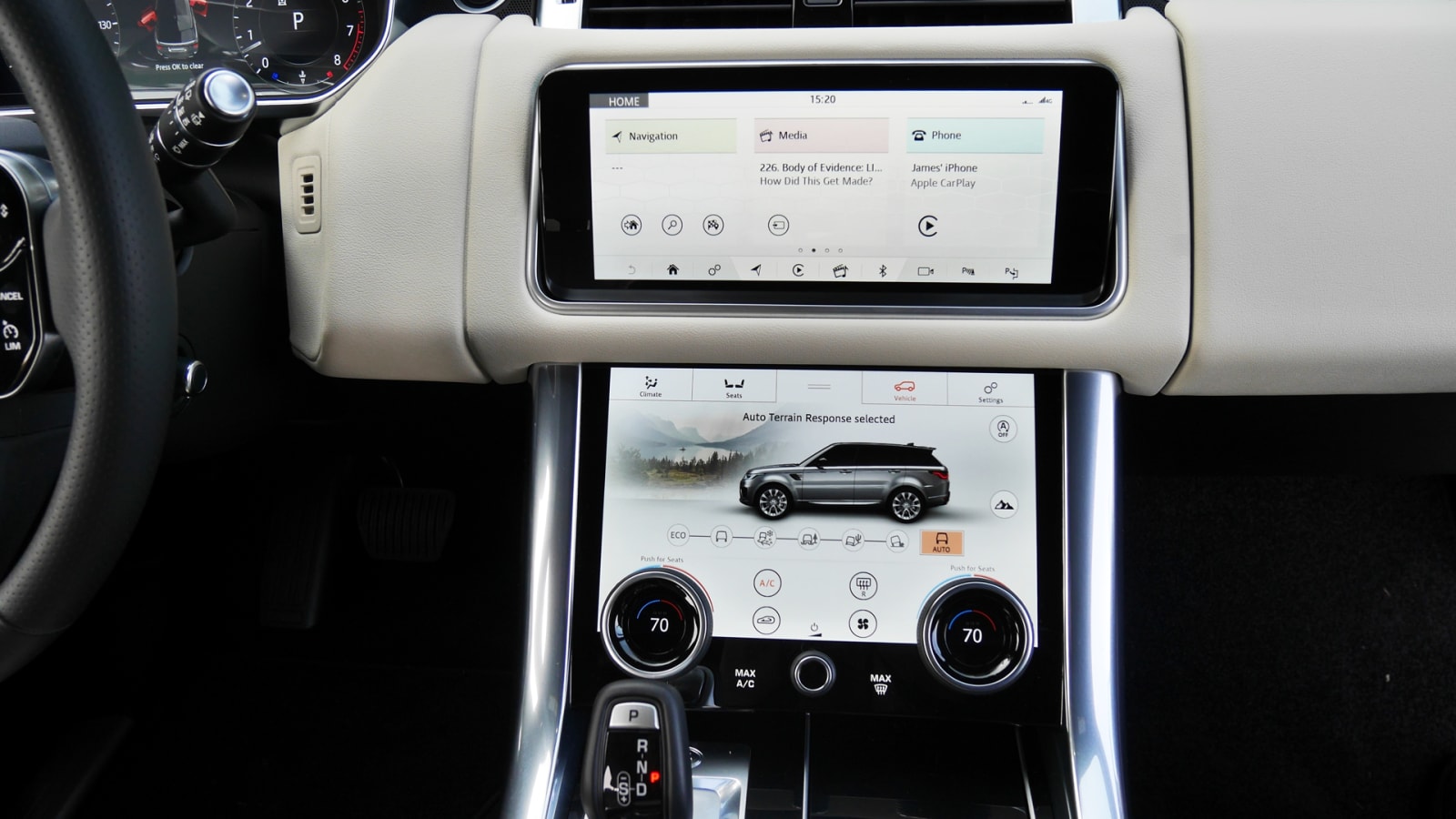
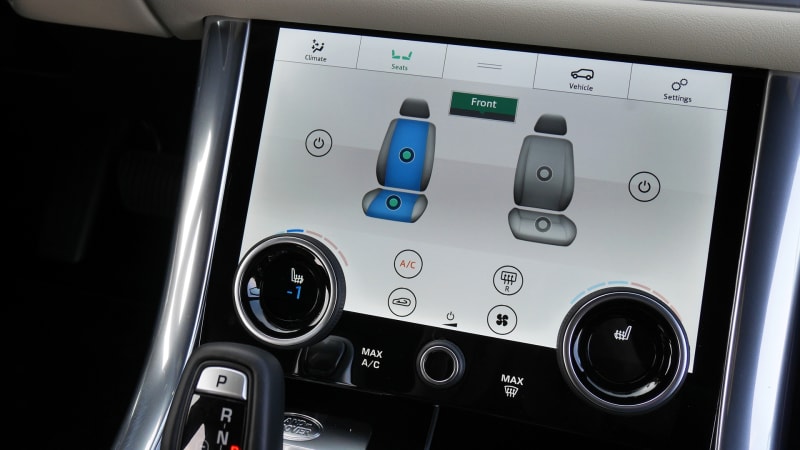
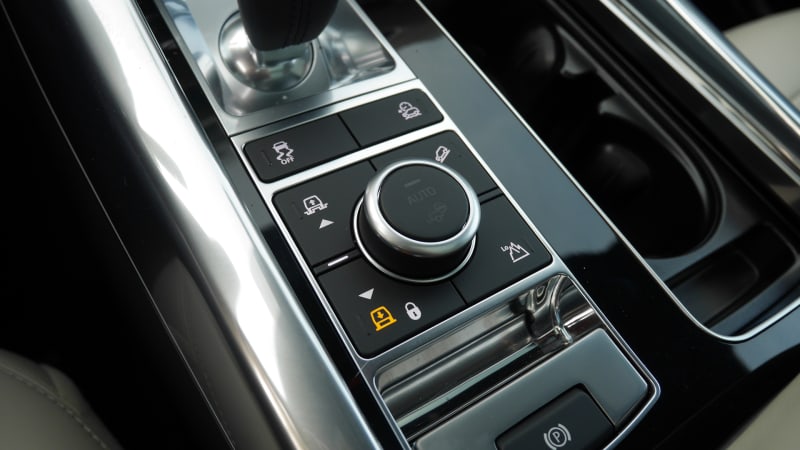
How big is it?
The Range Rover Sport is at once enormous and surprisingly small. It just depends on whether you’re outside or inside. Its sizable dimensions grant it a stately presence, and its air suspension allows you to raise and lower it at the press of a button. The photos you see here were taken in the highest off-road setting because, well, it just looks cooler that way.
Inside, the cargo area is sufficient for carrying a substantial amount of luggage, but its 27.5 cubic feet is still relatively meager for a midsize SUV. Its maximum capacity of 59.5 is less than many compact SUVs, and although that number could be the result of differing measuring techniques, the RR Sport is never what one would consider a max utility vehicle. You’ll want a Land Rover Discovery for that. Backseat room is also unremarkable, particularly should a tall driver be seated up front. There’s plenty of width, though, and the seats recline to an indulgent angle.
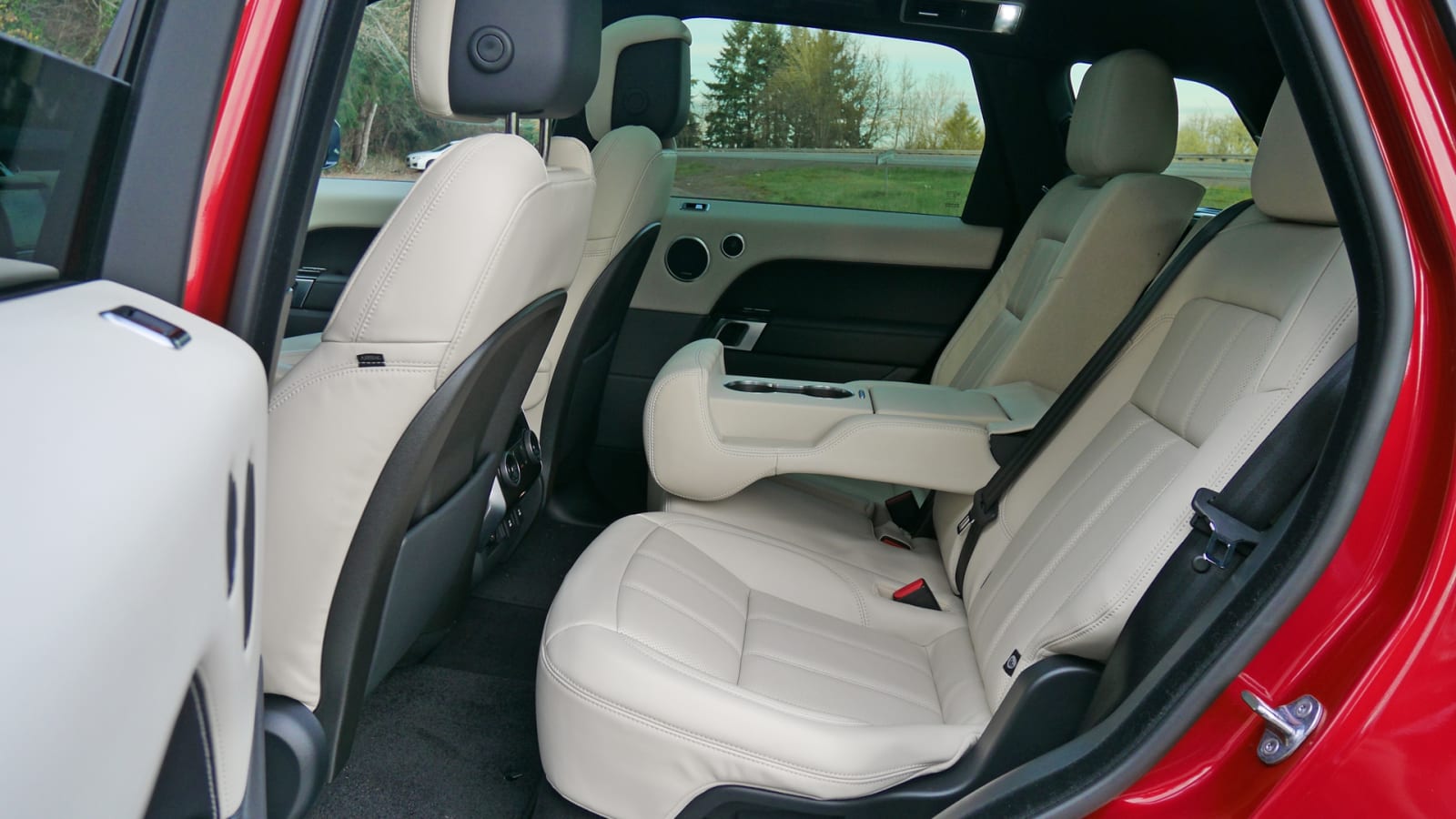
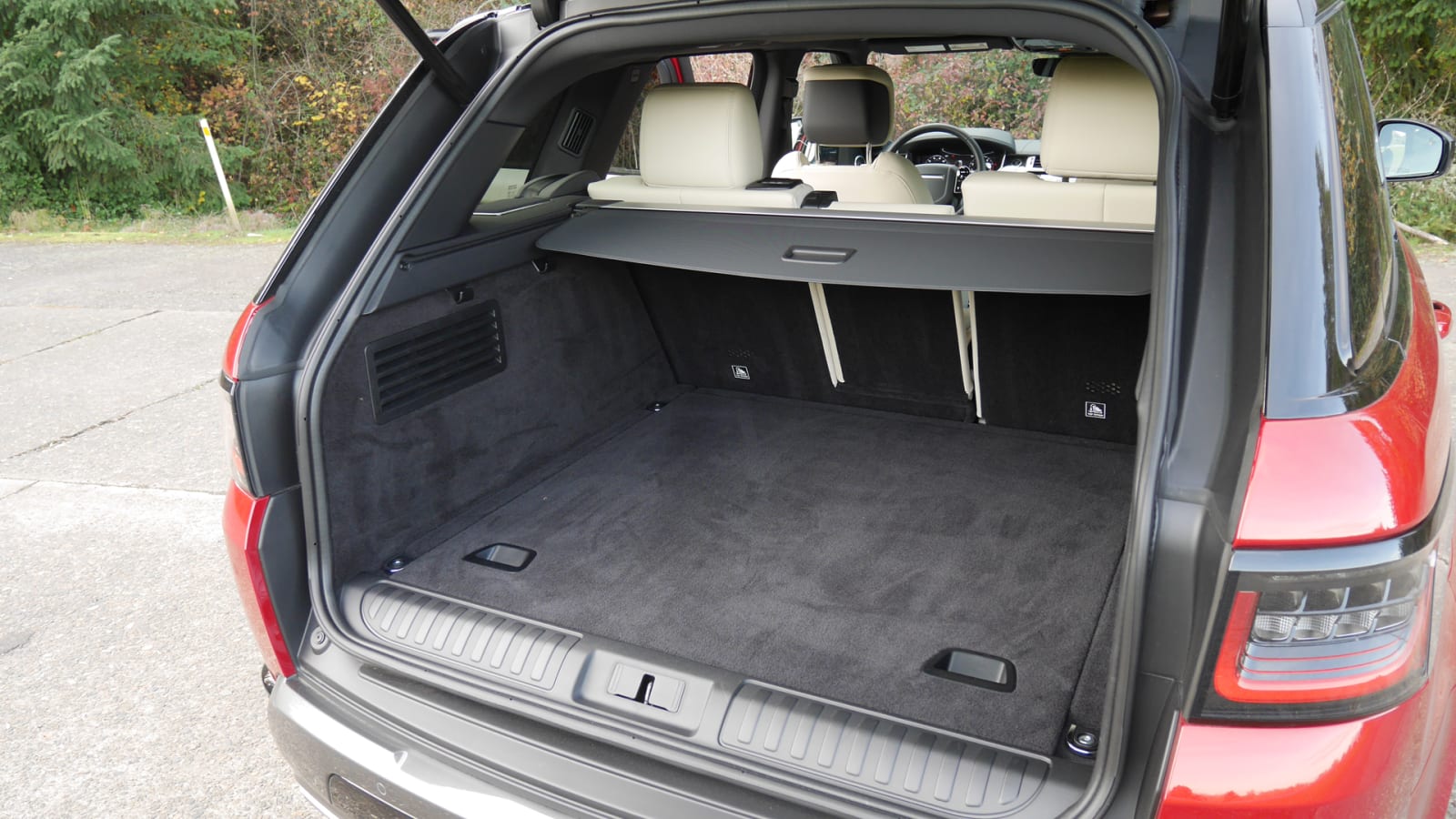
What’s the performance and fuel economy?
There are five engines offered on the 2020 Range Rover Sport, though their availability depends on trim level. All-wheel drive and an eight-speed automatic are standard on all.
The SE, HSE and HST come standard with a 3.0-liter turbocharged inline-six paired to a 48-volt mild-hybrid system (MHEV). It produces 355 hp and 365 pound-feet of torque, and Land Rover says it’ll go from zero to 60 mph in 6.2 seconds. That’s very quick for a base engine. Fuel economy estimates were not available at the time of this writing, but we would expect it to get the same 21 mpg combined as the regular Range Rover does with this engine.
Optional on the SE and HSE is a 3.0-liter diesel V6 (Td6) that produces 254 hp and 443 lb-ft of torque. It’ll hit 60 in an estimated 7.2 seconds. Fuel economy stands at 22 mpg city, 28 mpg highway and 24 mpg combined. It also has a 22.7-gallon fuel tank, so range could easily exceed 600 miles.
Optional on the HSE and Autobiography trims is the Range Rover Sport Plug-In Hybrid (P400e). It can go 19 miles on electricity alone and leans on a turbocharged inline-four when running as a hybrid. Total system output is 398 hp and 472 lb-ft of torque. Its 0-60 time is basically the same as the base engine, but its fuel economy is greatly superior at an EPA-estimated 42 MPG-e combined. If your daily drive stays within that 19 miles of electric range, however, fuel economy could be even greater. Exhaust the battery, and it’ll return 19 mpg combined.
Standard on the HSE Dynamic and Autobiography Dynamic is a 5.0-liter supercharged V8 that pumps out 518 hp and 461 lb-ft of torque. It’ll hit 60 mph in 5 seconds. Fuel economy is 17/22/19 mpg.
Finally, the mighty Range Rover Sport SVR pictured below steps things up with an upgraded version of the above V8 good for 575 hp and 516 lb-ft. It’ll hit 60 mph in an absurd 4.3 seconds. Its fuel economy is 15/20/16 mpg, or effectively, “Who the hell cares?”
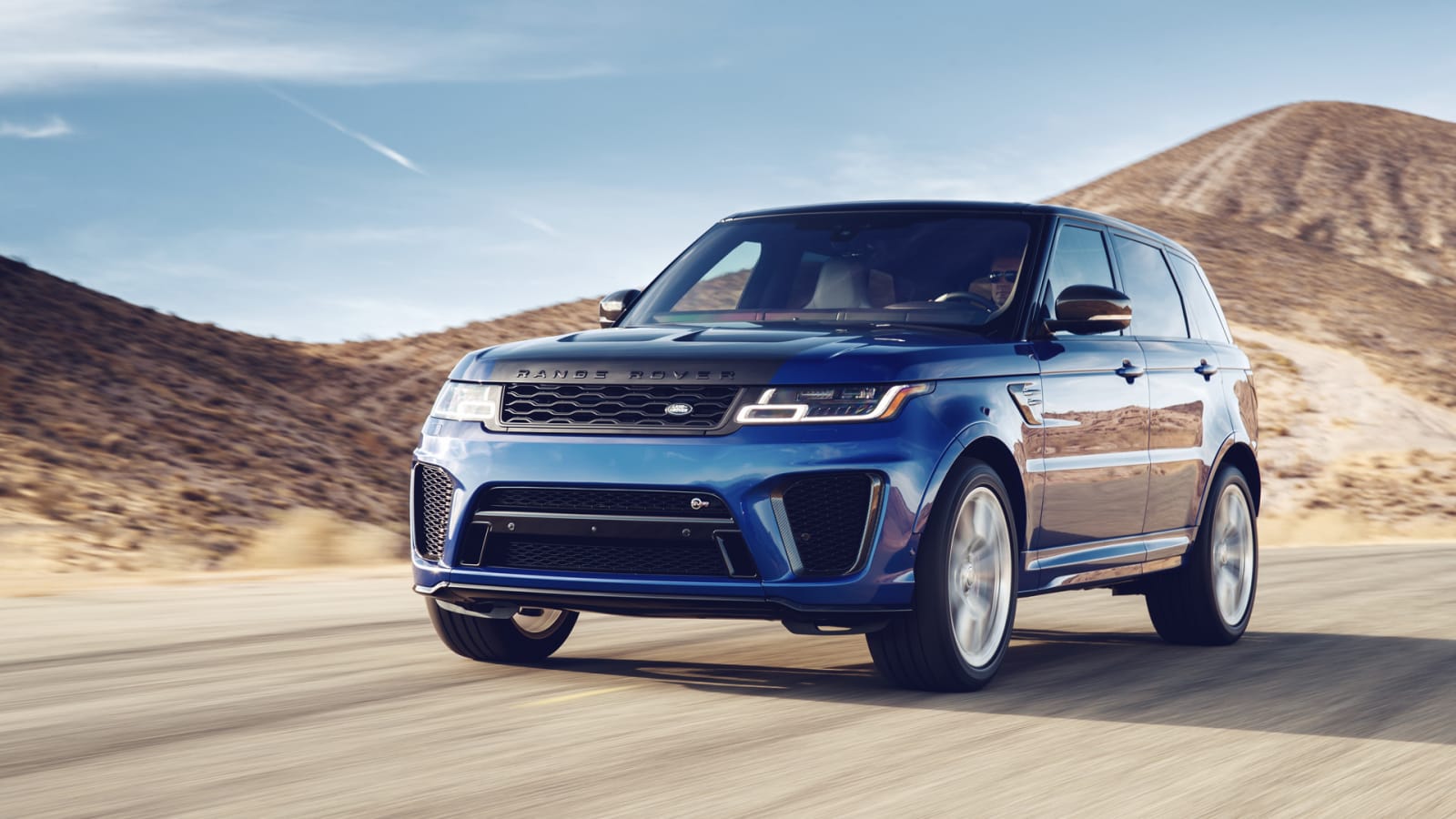
What’s it like to drive?
Like its big brother, the Range Rover Sport provides a truly commanding view of the road unmatched by most other SUVs. You sit upright, the window sill is roughly at elbow height, and the tall greenhouse and long, flat hood make it easy to place on the road despite the RR Sport’s hefty dimensions. The rest of the driving experience is comparable to the sans-Sport Range Rover as well – slow-yet-precise steering and impeccable ride quality with just the slightest bit of lean or tilt/dive. It’s stately. Yet, as this is the Sport, things are just a bit tauter, more responsive and, sure, sportier. It’s still big and heavy, and even the high-performance SVR is more fullback than wide receiver.
As for power? You can’t go wrong. Even the diesel, with its unremarkable 0-60 time, makes up for it with abundant torque that’ll make it feel sufficiently muscular around town and on the highway. However, we think your best bets are the new turbo inline-six base engine or the plug-in hybrid. Both powertrains were very impressive during our tests, capable of motivating the big Sport with sufficient zest, while delivering the refinement one expects from something donning the Range Rover name. Their superior fuel economy obviously is part of the appeal. That can’t be said about the big V8s. They’re wildly amusing, but their thirst is tough to justify.
What more can I read about the Range Rover Sport?
We do our standardized luggage test on the RR Sport to see how much luggage fits behind the back seat.
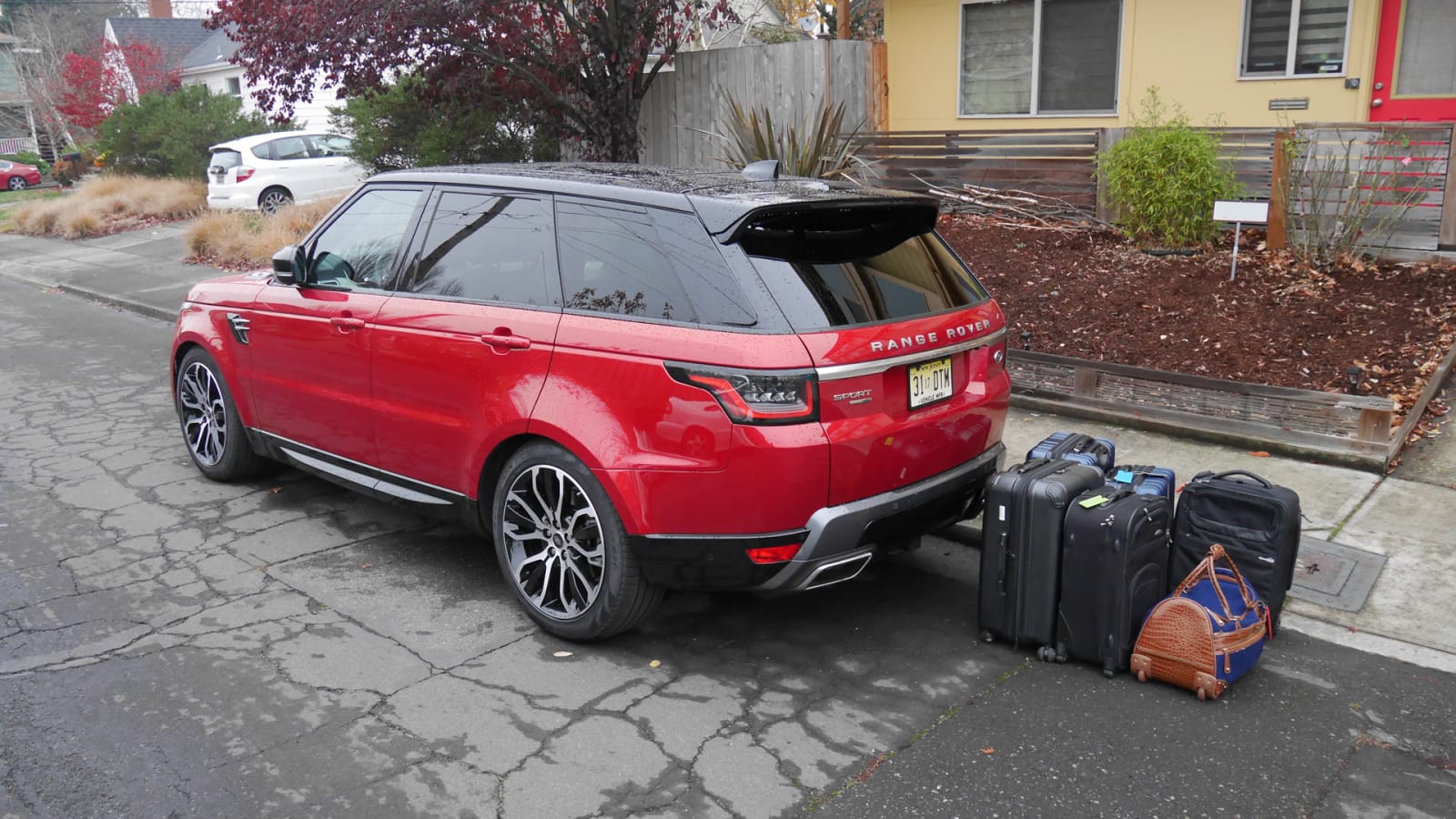
Want to know more about the plug-in hybrid powertrain? Here’s our review of it when fitted to the regular Range Rover.

Admittedly, this was before the current Evoque was introduced and there were some different engines, but broadly speaking, this lays out the size differences between each of the four Range Rover family members.
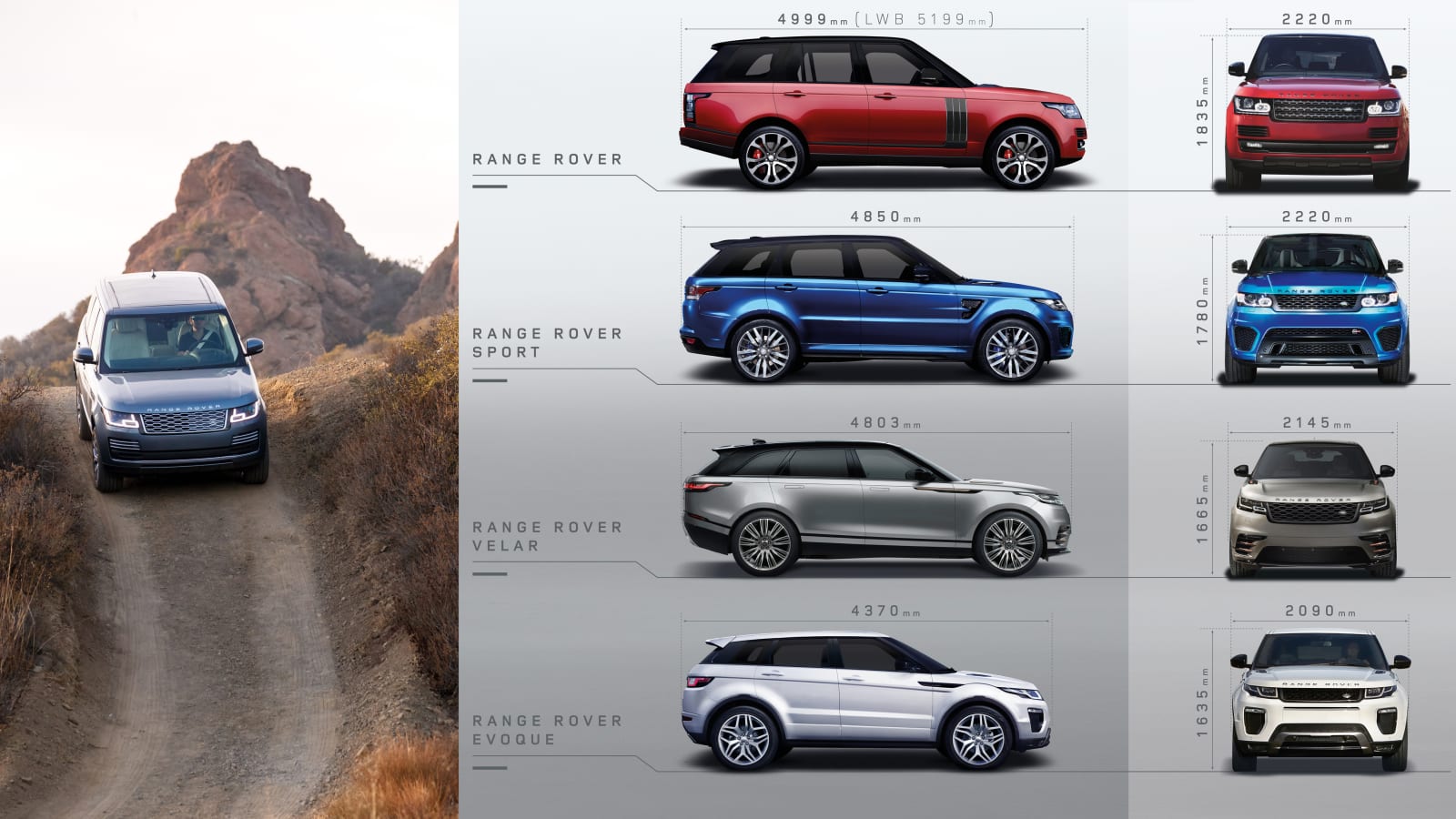
Behind the Wheel Video | Stuck inside a Range Rover Sport SVR on summer tires
What features are available and what’s the price?
Pricing for the 2020 Range Rover Sport starts at $69,945 for the base MHEV engine SE trim level, including the $1,295 destination charge. Note that the desirable plug-in hybrid (PHEV) basically costs an extra $10,000 to begin, while representing a nearly $6,000 premium over the gas-only HSE trim.
Standard features include the height-adjustable air suspension, Land Rover’s Terrain response settings, parking sensors, LED headlights, automatic wipers, leather upholstery, 14-way power front seats, a power-adjustable steering wheel, a power rear liftgate (that doesn’t raise high enough), the dual-screen InControl Touch Pro Duo interior interface, Apple CarPlay, Android Auto and an eight-speaker sound system.
From there, the features can be opulent. You can find a full breakdown of each trim’s features, specs and local pricing here on Autoblog.
- SE MHEV: $69,945
- SE Td6: $70,795
- HSE MHEV: $75,545
- HSE Td6: $76,295
- HSE P400e PHEV: $80,295
- HST: $84,245
- HSE Dynamic: $87,795
- Autobiography P400e PHEV: $90,285
- Autobiography Dynamic: $98,795
- Range Rover Sport SVR: $115,795

What are its safety equipment and crash ratings?
Forward collision warning and automatic emergency braking are standard along with lane-departure warning. You also get front and rear parking sensors included. The optional Drive Pack adds a driver inattention monitor, blind-spot warning and traffic sign recognition to warn drivers of speed limit. The Drive Pro pack adds a higher-speed automatic emergency braking system, lane-keeping assist, an active blind-spot system with automatic intervention, and adaptive cruise control with stop-and-go capability.
The Land Rover Range Rover Sport has not been crash-tested by a third party.
Auto Blog
via Autoblog https://ift.tt/1afPJWx
December 18, 2019 at 11:14AM